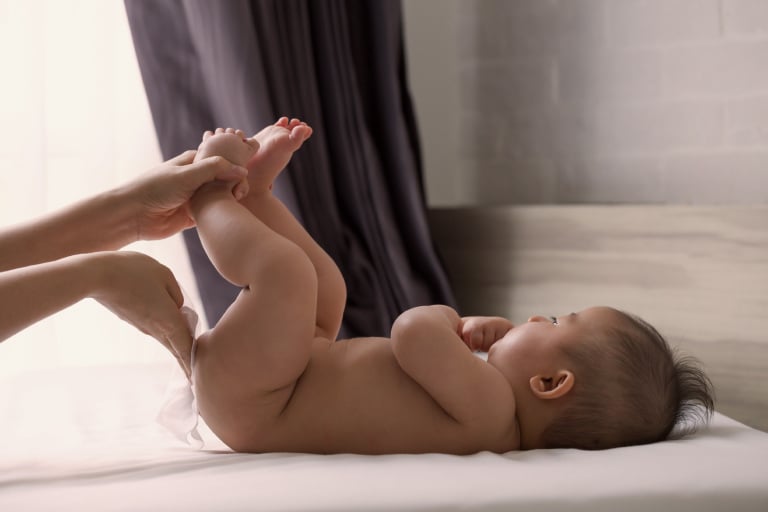Everyday Diaper Tips
Buying Diapers for Your Baby: How to Find the Right Size, Fit and Comfort

Once your baby arrives you'll be amazed by so many things. One of those unexpected surprises is just how many times a day you'll be changing diapers. You may also be amazed at how quickly your baby outgrows the size that fit perfectly just yesterday.
Since baby will be wearing a diaper all day and all night, it's key to buy the size that fits properly to prevent unpleasant leaks and messes while keeping baby clean, dry and comfortable. That's where the challenge comes in: How do you know what size diaper to buy, and when is it time to move to the next size? Here are some tips to make both baby and parent happy:
first diapers:
- pay close attention to the weight chart on each package to help you choose the size that's best for your growing baby.
- baby's first diaper will likely be a newborn size (up to 10 pounds) or size 1 (up to 14 pounds), but there are also preemie diapers for the tiniest babies (up to 6 pounds). you may want to stock up on a few packs of different sizes before baby arrives just to be prepared. be sure to put diapers and wipes on your registry. you can never have too many!
- to protect a newborn's umbilical cord stump, the smallest diapers actually have a cutout in front. if you are using a larger size, be sure to fold the diaper down and away from the area to ensure proper healing.
size and fit:
- size matters! diapers should fit snuggly around the waist and legs without gaps or sagging.
- although diapers are sized by weight, there is some overlap. for instance, size 1 is for infants up to 14 pounds, while size 2 is for those between 12 and 18 pounds. if your baby is 13 pounds and still fitting securely into size 1, it's safe to stay there a little longer. but if things seem a little tight, you might want to move to the next size.
time to upsize:
- when baby nears the top of the suggested weight range, it might be a good idea to buy the next size for optimal diaper performance and leakage protection.
- you'll know the size diaper you are using is too small when baby's onesies or t-shirts frequently get soaked and other leaky messes actually explode out the sides (a blowout is something you've got to see to believe!). if baby has red marks around the belly or thighs, it's also a sign that it's time to move up a size.
- if the next size is still too big, try a different style diaper or stay with the smaller size temporarily. in just a couple of weeks your baby is sure to have grown and the fit of the larger diaper will be just right.













